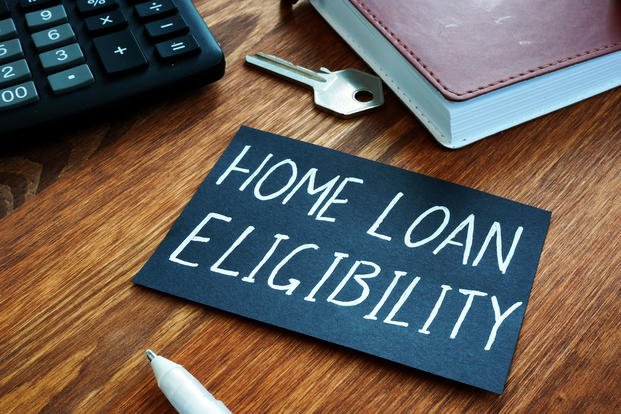A Department of Veterans Affairs loan is a helpful benefit offered to men and women of the armed forces who qualify.
The benefits provide certain opportunities you can't get with other loans. These perks include the ability to refinance your home up to 100% of its worth, and no down payments on a home purchase.
You may qualify for a VA loan if you didn't receive a dishonorable discharge and you meet the minimum active-duty service requirement based on when you served.
Additionally, many surviving spouses may also be eligible. Read more about surviving spouse eligibility.
Read More: VA Loan Requirements
In one of the first steps in the VA loan process, you must request a Certificate of Eligibility (COE) from Veterans Affairs. If you've served in one of the uniformed services, or are a surviving spouse, you may have earned home loan benefits. Obtaining your COE will help you know for sure.
What Is a VA Certificate of Eligibility?
The Certificate of Eligibility (COE), or Form 26-1880, proves to your lender that you, on behalf of the government, are qualified to receive a VA loan based on your military service. It also contains important information that can help your loan officer calculate your entitlement (how much the VA will guarantee for you) and fees (costs associated with the loan).
The COE also lets the lender know your level of entitlement -- the amount the Department of Veterans Affairs will guarantee on your VA loan.
This form will ask you about your living situation and dates of military service. It is recommended that you provide your proof of service form, along with the COE. (This is the DD Form 214, which you can get online if you do not have a copy.) For veterans who entered service after Sept. 7, 1980, and were discharged after serving fewer than two years, proof of service is required.
How Do I Get a VA Certificate of Eligibility?
An experienced lender can help you get a Certificate of Eligibility. For most borrowers, it makes the most sense to go straight to your VA-approved lender to get your COE. Most approved lenders have access to the VA online system and can print most COEs immediately. Not all COEs can be obtained this way, but many can. If your document cannot be obtained instantly, it's still wise to enlist your lender's help in obtaining it another way.
To get your COE, give your lender a bit of information about your military service. Usually, a COE can be acquired online instantly through a lender's portal or through the eBenefits portal on the va.gov website.
You can print out a request for your Certificate of Eligibility online and submit it to the VA for approval.
Service members or surviving spouses whose COEs cannot be obtained online can get theirs by mail. A VA lender or the VA can help direct you to the right resource.
To request a COE by mail, fill out a Request for a Certificate of Eligibility (VA Form 26-1880) and mail it to the address for your regional loan center. You can find the address on the last page of the form. Mail requests may take longer than requesting a COE through your lender.
Related: Get VA Form 26-1880 to download
Obtaining Your COE as a Veteran
Proof of service should accompany your COE application. If you're a veteran, you will need to submit DD Form 214, which you should have received when you were discharged.
If veterans cannot locate proof of service, they can request military documents by completing SF-180, Request Pertaining to Military Records.
Obtaining Your COE as Active Military
If you're still serving regular active duty, you'll need an original statement of service signed by, or by direction of, the adjutant, personnel officer or commander of your unit or higher headquarters.
This statement must show your date of entry and period ordered for current active duty and how much, if any, time lost. “Time lost” is a section on the statement of service that reflects the number of days of leave and other breaks in service.
Obtaining Your COE Being in the Reserves or National Guard
Current Reserve/Guard Members
Those still active in the Reserves/Guard must provide a statement of service signed by, or by the direction of, the adjutant, personnel office or commander of the unit or higher headquarters they are attached to. There is no one form used uniformly by the military for a statement of service. While statements of service are typically on military letterhead, some may be computer-generated.
The statement of service must clearly show:
- the veteran's full name,
- Social Security number,
- entry date of applicant's Reserve/Guard duty, and
- the name of the command providing the information.
Note: The statement must clearly indicate that the applicant is an "active" reservist and not just in a control group (inactive status).
Discharged Reserve/Guard Members
There is no one form used by the Reserves or National Guard that is similar to DD Form 214. Discharged members of the Army or Air National Guard may submit NGB Form 22, Report of Separation and Record of Service, or NGB Form 23, Retirement Points Accounting.
Typically, all members of the Reserves and/or Guard receive an annual retirement points summary that indicates the level and length of participation. The applicant should submit the latest such statement received, along with evidence of honorable service. The VA will accept originals or legible copies.
How to Get a COE as a Military Spouse
The steps you will take to apply for a COE as a military spouse depend on whether you're receiving Dependency and Indemnity Compensation (DIC).
If you're receiving DIC benefits:
- Fill out a Request for Determination of Loan Guaranty Eligibility -- Unmarried Surviving Spouses (VA Form 26-1817).
- Submit the veteran's DD 214 (or other separation papers) if available
- Submit the form and discharge or separation papers to your lender for processing online, or the VA regional loan center that serves your state
If you're not receiving DIC benefits:
- Fill out an Application for DIC, Survivors Pension and/or Accrued Benefits (VA Form 21P-534EZ)
- Submit the veteran's DD 214 (or other separation papers) if available
- Submit a copy of your marriage license
- Submit a copy of the veteran's death certificate
- Submit the form and documents to the VA pension management center that serves your state
Read More: VA home loan programs for surviving spouses
How Long Will It Take to Get My VA Loan Certificate of Eligibility?
If you submit your Certificate of Eligibility request through a lender or the eBenefits portal, it's possible to receive a response within minutes.
But if you print out a request for your Certificate of Eligibility and submit it to the VA for approval, it could take four to six weeks to receive a response.
Reading Your COE
Your COE contains alphanumeric codes and other information that your licensed VA loan officer is trained to decipher. Unfortunately, some potential borrowers try to interpret their COE on their own and misinterpret their loan entitlement. A common mistake is seeing a zero on the form and thinking there's no entitlement available.
"Just because your COE says $0 basic entitlement doesn't automatically mean you have no entitlement," says retired Maj. Tim Lewis, an Army veteran who later worked in the mortgage lending business.
Read More: VA Loans Overview, Including Types of VA Loans
VA Entitlement Codes
Entitlement codes that appear on VA Certificates of Eligibility are as follows:
- 01 World War II (Standard funding fee)
- 02 Korean War (Standard funding fee)
- 03 Post-Korean (Standard funding fee)
- 04 Vietnam War (Standard funding fee)
- 05 Prior Entitlement Use (Subsequent use funding fee)*
- 06 Eligible Surviving Spouse (No funding fee)
- 07 Spouse of POW/MIA (No funding fee)
- 08 Post-World War II (Standard funding fee)
- 09 Post-Vietnam (Standard funding fee)
- 10 Persian Gulf War (includes National Guard/reservist with qualifying active duty from Title 10 call-up; standard funding fee)
- 11 Selected Reserve (without qualifying active duty from Title 10 call-up; additional .25% funding fee)
*Condition 5 supersedes period served or status as eligible spouse or reservist; second-use funding fee applies unless exempt. The subsequent use funding fee will still apply with Codes 1-4 and 8-10 if a previous VA loan is shown.
VA Funding Fee
The funding fee is applied to almost every VA purchase and refinance loan, with only a few exceptions.
The amount of the funding fee depends on several factors, including the details of the military member's service, whether a down payment is applied, and the number of times the loan benefit has been used.
Active-duty service members traditionally pay the lowest funding fees among their military peers, National Guard members and reservists.
"While most Veterans pay 2.3%, this fee ranges from 0.5% to 3.6%," according to Veterans United, a VA lender.
Here's a breakdown from the VA of how the fee is calculated.
To give an example of a typical scenario, for a $400,000 home purchase with a 5% down payment, the homebuyer would pay a $9,200 funding fee.
The funding fee applies only to the loan amount, not the purchase price of the home.
Read More: VA Funding Fee
Will Getting a Certificate of Eligibility Guarantee a VA Loan?
No. Just because you're eligible doesn't mean you qualify. Once you prove VA eligibility to a lender, it still would need to be determined whether you qualify for a VA home loan.
Like any mortgage process, obtaining a VA home loan entails several crucial steps you must take before you can get the keys to your home.
Your next steps will depend on the type of loan you seek, whether it's through a private bank or mortgage company (the most common scenario), or the Native American Direct Loan. (Read more: Native American Direct Loan (NADL) Program)
Does a COE Expire?
Unless you originally applied for your COE while on active duty, this document never expires. If your COE was obtained while on active duty, you'll need to get another one after discharge.
Also, you may be able to use a COE that you used in the past to buy another home with a VA loan if at least one of these is true:
- You've sold the home you bought with the prior loan and have paid that loan in full.
- A qualified veteran-transferee agrees to assume your loan and substitute their entitlement for the same amount of entitlement you used originally.
- You've repaid your prior loan in full, but haven't sold the home you bought with that loan (you can do this only once).
Take the Next Step
Talk to a VA-approved lender. If you're ready to move forward, or just want more information, the first step is to get no-obligation rate quotes.
Information from the U.S. Department of Veterans Affairs, and previously published information on Military.com, contributed to this report.










